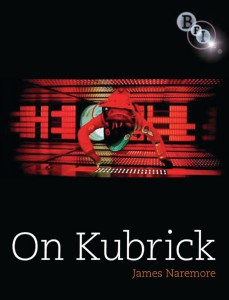On Kubrick


Average rating: ![]()
| 0 | rating | |
| 0 | rating | |
| 0 | rating | |
| 0 | rating |
Your rating: -
Book Presentation:
On Kubrick is a critical study of Stanley Kubrick's career, beginning with his earliest feature, "Fear and Desire" (1953), and ending with his posthumous production of "A.I., Artificial Intelligence" (2001). Organized in six parts ("The Taste Machine," "Young Kubrick," "Kubrick, Harris, Douglas," "Stanley Kubrick Presents," "Late Kubrick," and "Epilogue"), it offers provocative analysis of each of Kubrick's films together with new information about their production histories and cultural contexts. Its ultimate aim is to provide a concise yet thorough discussion that will be useful as both an academic text and a trade publication. The book argues that in several respects Kubrick was one of the cinema's last modernists: his taste and sensibility were shaped by the artistic culture of New York in the 1950s; he became a celebrated auteur who forged a distinctive style; he used art-cinema conventions in commercial productions; he challenged censorship regulations; and throughout his career he was preoccupied with one of the central themes of modernist art - the conflict between rationality and its ever-present shadow, the unconscious. War and science are often the subjects of his films, and his work has a hyper-masculine quality; yet no director has more relentlessly emphasized the absurdity of combat, the failure of scientific reasoning, and the fascistic impulses in masculine sexuality. The book also argues that while Kubrick was a voracious intellectual and a life-long autodidact, the fascination of his work has less to do with the ideas it espouses than with the emotions it evokes. Often described as "cool" or "cold," Kubrick is best understood as a skillful practitioner of what might be called the aesthetics of the grotesque; he employs extreme forms of caricature and black comedy to create disgusting, frightening, yet also laughable images of the human body. No less than Diane Arbus (who was his contemporary), he makes his viewers uneasy, unsure how to react either emotionally or politically.
About the Author:
James Naremore is Chancellors' Professor Emeritus at Indiana University, USA. Among his books are The Magic World of Orson Welles (2015), Acting in the Cinema (1988), More Than Night: Film Noir in its Contexts (2008), On Kubrick (2007), Sweet Smell of Success (2010), An Invention without a Future: Essays on Cinema (2014), and Charles Burnett: A Cinema of Symbolic Knowledge (2017).
See the publisher website: BFI Publishing
See the complete filmography of Stanley Kubrick on the website: IMDB ...
> From the same author:
The Haunted Cinema of Pedro Costa (2025)
by James Naremore and Darlene J. Sadlier
Subject: Director > Pedro Costa
Letter from an Unknown Woman (2021)
Subject: One Film > Letter from an Unknown Woman
The Treasure of the Sierra Madre (1979)
Dir. James Naremore
Subject: One Film > The Treasure of the Sierra Madre
> On a related topic:
Kubrick (2025)
An Odyssey
by Robert Phillip Kolker and Nathan Abrams
Subject: Director > Stanley Kubrick
Strangelove Country (2025)
Science Fiction, Filmosophy, and the Kubrickian Consciousness
Subject: Director > Stanley Kubrick
Kubrick's Mitteleuropa (2024)
The Central European Imaginary in the Films of Stanley Kubrick
Dir. Nathan Abrams and Jeremi Szaniawski
Subject: Director > Stanley Kubrick
Archive Histories (2024)
An Archaeology of the Stanley Kubrick Archive
Subject: Director > Stanley Kubrick
Kubrick and Control (2023)
Authority, Order and Independence in the Films and Working Life of Stanley Kubrick
by Jeremy Carr
Subject: Director > Stanley Kubrick
A Critical Companion to Stanley Kubrick (2022)
Dir. Elsa Colombani
Subject: Director > Stanley Kubrick